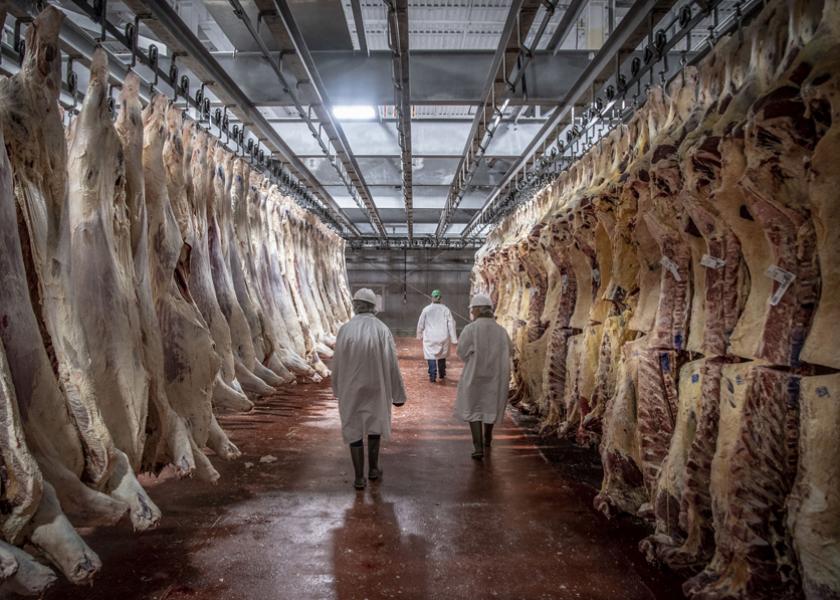$1.1 Billion Next-Generation Beef Plant Proposed for Rapid City, SD

The world’s largest beef packing facility could be coming to the Black Hills of South Dakota. On Friday a group led by Kingsbury and Associates and Sirius Realty of Rapid, City, announced plans to build a $1.1 billion state-of-the-art beef and bison processing plant that would harvest 8,000-head per day.
The proposed facility would cover 1-million square feet and employ 2,500 workers.
“This will be a next generation plant, the only plant of its type in North America,” Megan Kingsbury, president and managing partner, who is leading the project, told Drovers. “This will be a tech-driven plant.”
If realized, the 8,000-head per day capacity of the Rapid City plant would eclipse the total capacity of all other recently proposed start-up packing facilities combined.
The project is currently in a six-month research and development phase, with groundbreaking expected in early 2023. Kingsbury, a fifth-generation rancher raised on the family ranch – Grimes Cattle Company – says she knows how difficult it is for ranchers to operate profitably in today’s environment.
“I want to fix that,” she said. “Our aim is to restore competition in American meat processing. We want to compete with the big four meat packing giants and be that all-important ‘second bidder’ in the cash market. We will build a brand that is America-first focusing on procuring American cattle and feeding American citizens affordable, high-quality protein as our first priority.”
Specifically, Kingsbury said this new beef processor – which as yet is unnamed by the investor group – will focus on technology, artificial intelligence and robotics that “removes the entire (packing plant) stigma of sweatshop and creates a humane work environment for the employees and utilizes humane practices for the animals.”
The focus on technology is how, she says, the 8,000-head per day plant will be able to operate with roughly 20% fewer employees than the average 4,000 employees that currently staff the 6,000-head per day plants operated by Tyson, Cargill and National Beef. Utilizing new technologies will enable the proposed plant to process cattle easier, safer and more efficient, all while operating more environmentally friendly.
“We want this plant to be a carbon neutral plant,” Kingsbury said. “We are going to capture the methane to help power the facility, utilize energy resources, recycle a majority of the water used daily, and continue work on efficient transportation plans.”
Construction of the facility will take three years and would open with one beef line and one bison line. It would require an additional three months to open successive lines until the facility reaches capacity.
“Our work force will be very different than what is typical in a beef plant,” Kingsbury says. “If we were to open today our minimum wage would be $28 per hour. These are tech driven jobs. Top managers will be industrial engineers, robotic engineers, computer engineers, etc.”
As spokesperson for the investors behind the proposal, Kingsbury also noted a desire to help ranching families through these difficult financial times.
"The American rancher is less than a generation away from being extinct if we don't do something fast," Kingsbury said. "We've already seen the high cost of meat in stores and the low prices producers are receiving for their animals. There is profit in this industry up and down the supply chain if we restore competition. When that happens everyone who produces and consumes high-quality beef wins."







